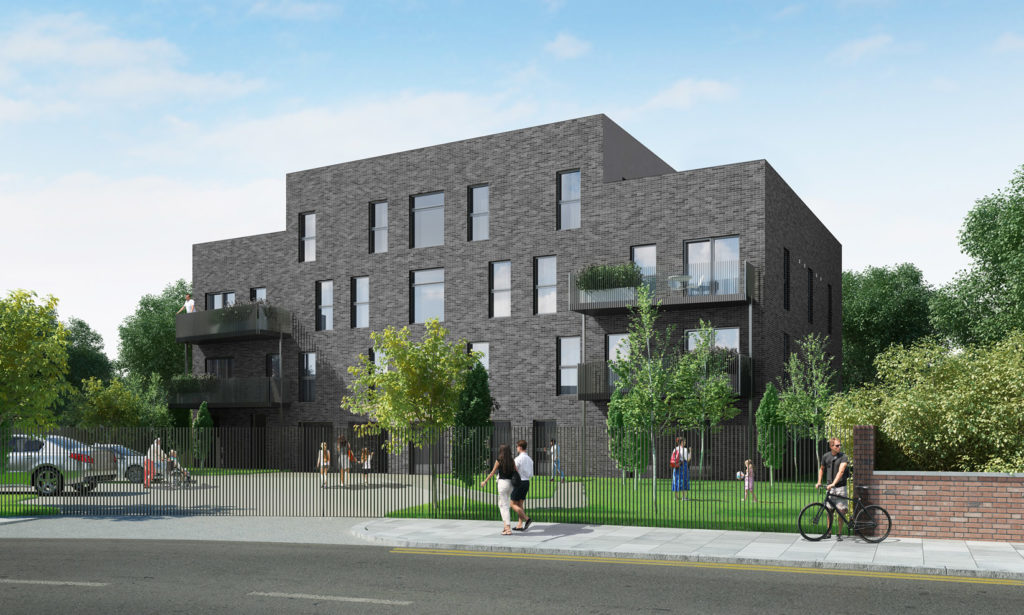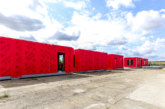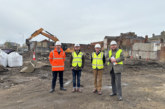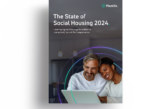 Richard Hyams, Founder and Director of astudio, shares his ideas on how tech can drive more sustainable design.
Richard Hyams, Founder and Director of astudio, shares his ideas on how tech can drive more sustainable design.
The far-reaching pressures of the coronavirus pandemic have triggered a historic moment for change and reflection across society. With a new opportunity for green recovery across our economy, and with the UK Government recently announcing a £3bn green investment package in its summer statement, improving Britain’s environmental impact must be a priority. Increasingly, the sustainability of our buildings is at the centre of this agenda.
However, our built environment continues to account for 40% of carbon emissions in the UK. In order to reach the UK’s net-zero emissions target by 2050, we must consider how to best design and develop buildings that meet the environmental challenges and social needs of our modern world. And to do so both effectively and efficiently, we must turn to innovative, technology-powered solutions.
Nature meets technology
Artificial Intelligence (AI) is becoming an increasingly valuable resource in guiding new ways of thinking in architecture and building design and its impact on ambitious sustainability efforts is considerable. Take genetic algorithms, for example. Using machine learning, the ‘self-teaching’ algorithm replicates the process of evolution, using biologically inspired operators such as mutation, cross over and selection to test and develop designs. This enables architects to make intelligent design decisions while also requiring less time and resources than traditional pen and paper methods.
Far from a fad, genetic algorithms have been applied to a range of problems of significant complexity, with the furniture industry just one example. Already, genetic algorithms are being used in the industry to continuously review production processes, producing visual models that can optimise systems and ensure schedules are met — a use that can be easily replicated across the manufacturing sector to find new solutions and increase the efficiency of various processes.
The metaheuristic system can test designs against a range of parameters and adapt the building accordingly to achieve the best environmental outcomes, such as improved energy efficiency or reduced material waste from the construction of a building. But the real benefit can also be found in the flexibility they offer for interrogating a diverse range of problems, for example designing new schemes and layouts for modular construction. In our own work at astudio, we have used genetic algorithms to become as creative as possible in our testing processes, using its non-linear way of assessing design (which in many ways mirrors the conditions of the natural world) to ensure that the final design we arrive at is as tried and tested as possible.

A modular solution
Alongside designing buildings with the potential to minimise the environmental impact of our built environment, we must also adopt innovative construction solutions that improve sustainability at the build-stage of a design. Modular construction offers one such solution. In fact, estimates suggest that modular construction requires, on average, 67% less energy consumption.
Far more efficient than traditional construction methods, modular manufacturing also produces less material waste and minimises both noise pollution and disruption on site. Buildings can be constructed robotically in a factory setting and then transported to a building location for faster assembly. In our own work, this has enabled astudio to halve the estimated construction time of our Sudgen Way project, due to deliver 13 new homes in Barking this year, compared to traditional construction methods.
astudio’s Desborough Road project is a further example, set to provide 58 units of accommodation for homeless and vulnerable people for Wycombe District Council. The project uses a fabric-first approach to enhance insulation, reduce heat loss and minimise air infiltration — thereby improving efficiency, as well as providing vital accommodation near local healthcare centres and schools, enhancing social impact and serving the community.
Not only has the delivery timeline been expedited in comparison to traditional construction methods, providing much-needed homes at pace, it has also minimised costs, maximising the volume of accommodation that can be delivered, or freeing up funds for investment in further social impact and environmental projects. Further, modular construction can help to provide a viable ‘meanwhile’ solution — providing homes in the immediate term that can be ‘recycled’ across other sites to quickly deliver accommodation solutions at sites awaiting further long-term development.

Where next?
Putting people and the environment at the centre of our practice across the property and construction industries is key if the UK is to meet its 2050 emissions goals, as well as providing a built environment that delivers the social impact we need not only during the coronavirus pandemic, but for the months and years to come.
Thinking in innovative ways is crucial, which is why at astudio we have been exploring the possibilities of ‘living walls’ to improve the sustainability of projects built in the future, as well as the buildings we already have. astudio was the first UK firm to purchase an algae machine from US pioneer Sustainable Now Technologies, which has allowed us to develop a method of skinning building exteriors with algae compounds that can sequester existing carbon from the atmosphere. These algae compounds can later be harvested to produce sustainable biofuel, helping to deliver truly self-sufficient and future-proof buildings.
For both new buildings and retrofitting projects, sustainability and people must be central. Technology will be crucial to achieving this: delivering carbon savings, offsetting emissions and ensuring maximum social impact by engaging the community on projects in more innovative ways.
Only then will we see a truly green and sustainable recovery from the coronavirus pandemic.









